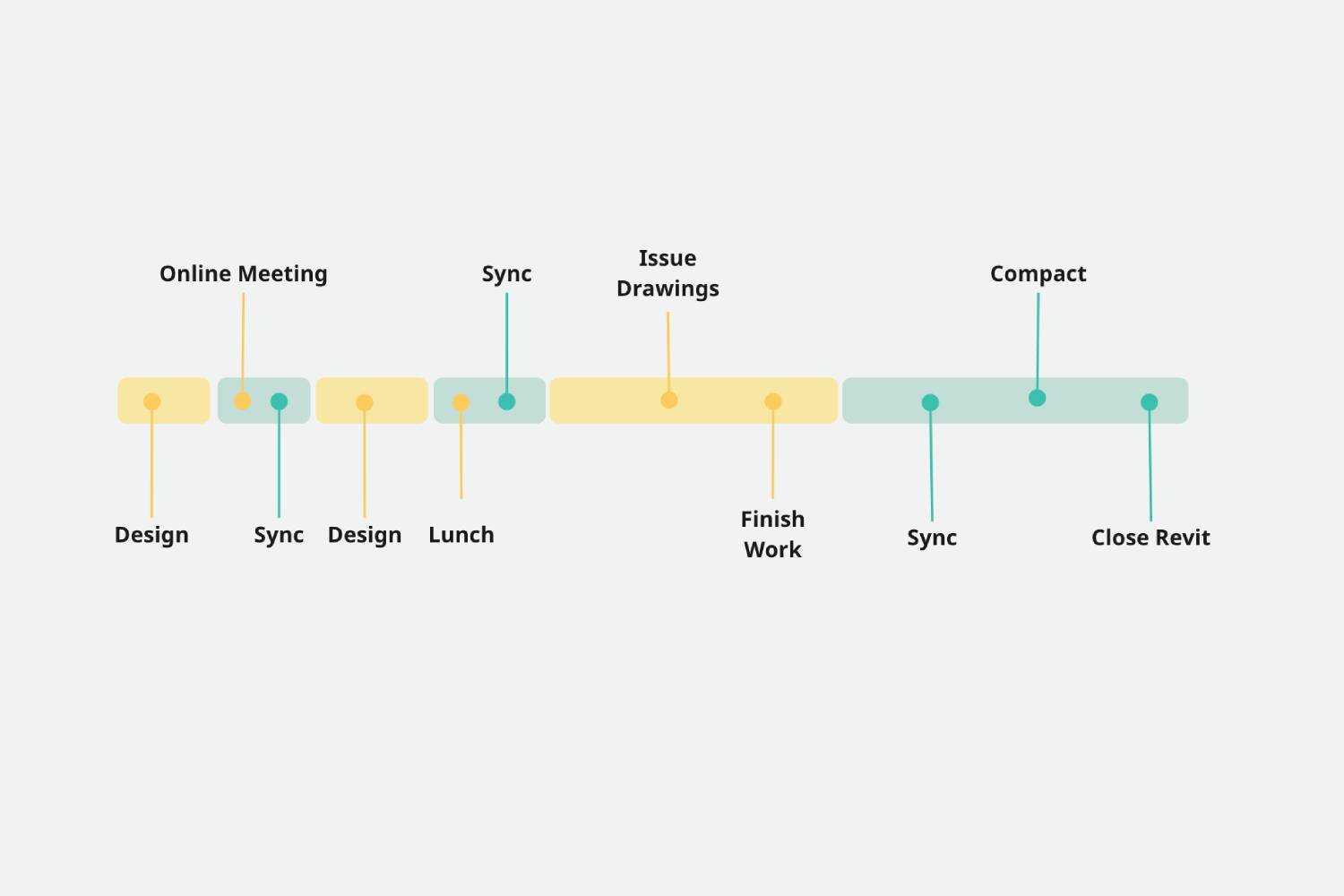In order to keep Revit speedy, one needs to compact the file storage during the night automatically. In this article, we will analyze the reasons to compress the document and the automation technique to achieve that without any effort using iSync.
File inefficiencies
Besides the geometry and the information that the user has placed into a Revit model, the file itself uses data sectors on its own file structure. After a few operations, the Revit´s file structure becomes increasingly inefficient and grows in size. At the beginning of this process, the ineffective data is just 5-6%, but after many weeks it grows up to 40%. Unless someone manually presses the compact checkbox when saving as or synchronizing the model, Revit will never remove the ineffective data. One can wonder why this does not happen automatically during a Revit session on the Revit server or the Autodesk cloud. Still, the fact is that by default Autodesk Revit relies on a manual process to optimize the file.
This issue with file inefficiency happens in many different file types across software products that run on the Windows operating system, and it is not a specific Autodesk problem. It is, in fact, more of a consequence of the technology developed by Microsoft.
Do we notice when the Revit file grows?
Absolutely. For instance, when working with workset-enabled documents, one wonders why it takes all that time to synchronize. A key factor in that process is the amount of data and the consequent size of the file that needs to be changed. When working with a non-compacted file, there are more drive sectors to address, which takes more time. And as said before, the inefficiency in the file will not stop growing or self-heal. It most likely develops to become worse until the day the user manually compresses the file.
What happens when Revit compacts a workset-enabled document?
According to Autodesk, Revit reduces file sizes when saving workset-enabled files. Revit only writes new and changed elements to the existing files during a regular save. This can cause files to become large, but it increases the speed of the save operation. The compacting process rewrites the entire file and removes obsolete parts to save space.
How much can the model be compacted?
It all depends on how often the file was saved since unnecessary data is stored every time it gets saved. If your company does not compact the files regularly, the compression potential is around 40%; indeed, a huge save in data transfer time and storage. If your company already does compact the model regularly, one can estimate at least an average of 11%
How long does it take to compact a Revit model?
Compacting the model implies reading and writing a completely new file. A local file on an SSD drive saving duration is double the time of a regular save.
But a cloud model can take significantly longer than a delta (differential) save since Autodesk uses the S3 service from Amazon AWS, and that has limited bandwidth. That can be several times smaller than what you have available in your office, typically 1 Gbps. A large model in the cloud can take a few minutes to compress.
When should the model be compacted?
Because compact takes more time than a standard saving operation, the compact option must be used when the workflow can be interrupted. The ideal situation is when you are away from your computer. Either during the lunch period, when you are having a meeting, or during the night.
How is the Revit file inefficiency hurting your company?
A recent article from Konrad Sobon suggests that a 100-user company saving $142.060 is achievable by compacting the Revit documents overnight. A company of that size typically does about 600 synchs a day, which in turn totals a time usage of about 2,6 weeks (430 hours) per quarter just doing synchs using real project data. So eliminating this process slowdown, even partially, increases the company's productivity.
The success and failure of a person or company depend on how wisely they spend time, and those who utilize their time wisely surely attain success.
The ideal compact process
We propose an automated process instead of the native Revit process that involves manually pressing a checkbox. Using user-friendly software, the documents should be compacted automatically once a day in any machine where the document is open, not by the BIM manager. That means there should not be the need to have a specific computer or script to do that that is only available to an expert. Making this process available to any user increases the likelihood of its success.
As indicated before, the automatic compact operation of the document needs to occur when the user is not actively using Revit. Our application iSync detects when Revit is not in use and can then trigger the compact operation without compromising your work. It is also possible to set it up to compress the models during the night only.
Who compacts the model, either an architect or a BIM manager, is unimportant. The real importance is to include compact operations as part of the maintenance routines of your documents.
With this knowledge, you can implement an effortless routine to get a speedier Revit session.




